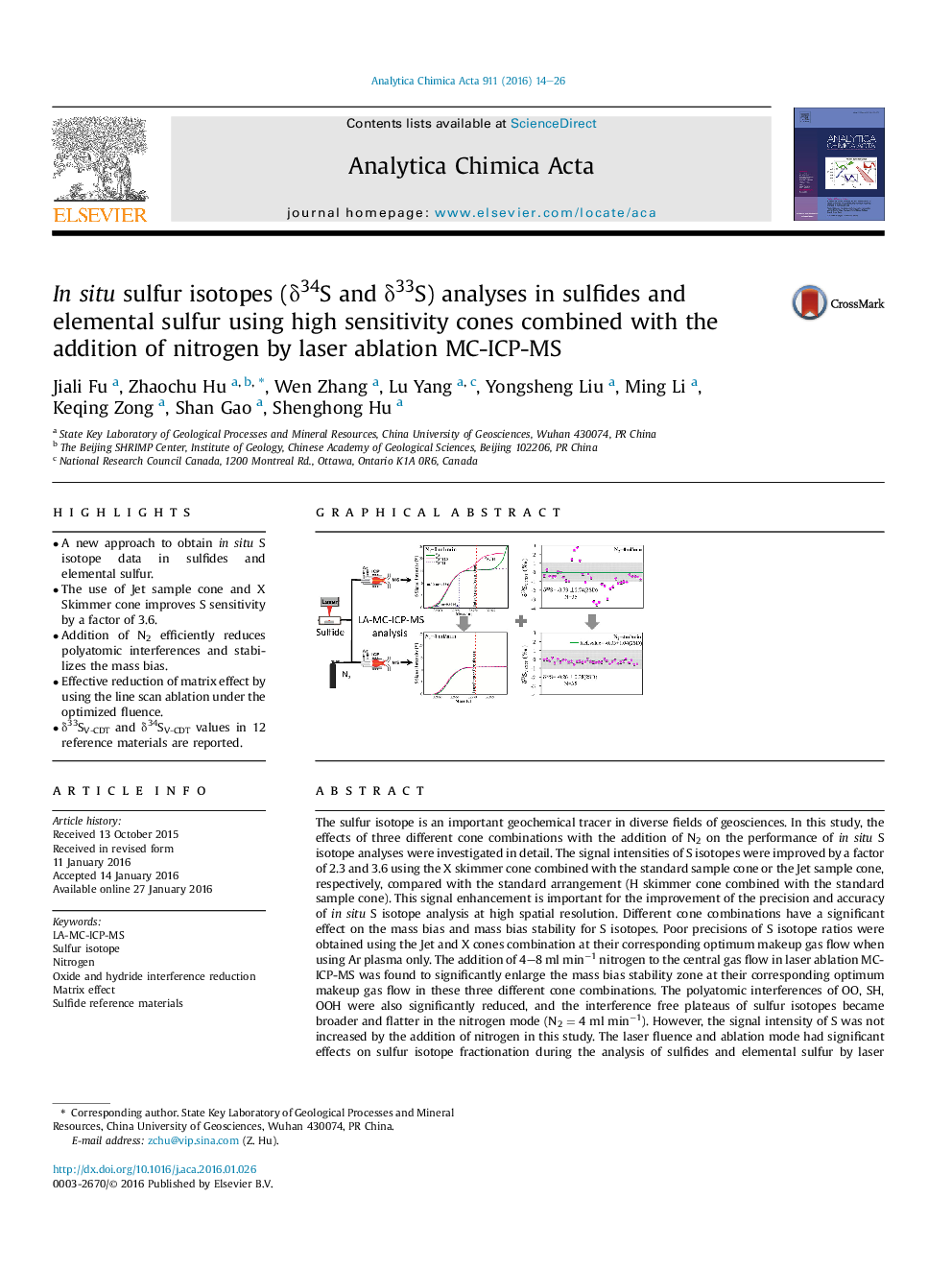| کد مقاله | کد نشریه | سال انتشار | مقاله انگلیسی | نسخه تمام متن |
|---|---|---|---|---|
| 1162964 | 1490921 | 2016 | 13 صفحه PDF | دانلود رایگان |

• A new approach to obtain in situ S isotope data in sulfides and elemental sulfur.
• The use of Jet sample cone and X Skimmer cone improves S sensitivity by a factor of 3.6.
• Addition of N2 efficiently reduces polyatomic interferences and stabilizes the mass bias.
• Effective reduction of matrix effect by using the line scan ablation under the optimized fluence.
• δ33SV-CDT and δ34SV-CDT values in 12 reference materials are reported.
The sulfur isotope is an important geochemical tracer in diverse fields of geosciences. In this study, the effects of three different cone combinations with the addition of N2 on the performance of in situ S isotope analyses were investigated in detail. The signal intensities of S isotopes were improved by a factor of 2.3 and 3.6 using the X skimmer cone combined with the standard sample cone or the Jet sample cone, respectively, compared with the standard arrangement (H skimmer cone combined with the standard sample cone). This signal enhancement is important for the improvement of the precision and accuracy of in situ S isotope analysis at high spatial resolution. Different cone combinations have a significant effect on the mass bias and mass bias stability for S isotopes. Poor precisions of S isotope ratios were obtained using the Jet and X cones combination at their corresponding optimum makeup gas flow when using Ar plasma only. The addition of 4–8 ml min−1 nitrogen to the central gas flow in laser ablation MC-ICP-MS was found to significantly enlarge the mass bias stability zone at their corresponding optimum makeup gas flow in these three different cone combinations. The polyatomic interferences of OO, SH, OOH were also significantly reduced, and the interference free plateaus of sulfur isotopes became broader and flatter in the nitrogen mode (N2 = 4 ml min−1). However, the signal intensity of S was not increased by the addition of nitrogen in this study. The laser fluence and ablation mode had significant effects on sulfur isotope fractionation during the analysis of sulfides and elemental sulfur by laser ablation MC-ICP-MS. The matrix effect among different sulfides and elemental sulfur was observed, but could be significantly reduced by line scan ablation in preference to single spot ablation under the optimized fluence. It is recommended that the d90 values of the particles in pressed powder pellets for accurate and precise S isotope analysis should be less than 10 μm. Under the selected optimized analytical conditions, excellent agreements between the determined values and the reference values were achieved for the IAEA-S series standard reference materials and a set of six well-characterized, isotopic homogeneous sulfide standards (PPP-1, MoS2, MASS-1, P-GBW07267, P-GBW07268, P-GBW07270), validating the capability of the developed method for providing high-quality in situ S isotope data in sulfides and elemental sulfur.
Figure optionsDownload as PowerPoint slide
Journal: Analytica Chimica Acta - Volume 911, 10 March 2016, Pages 14–26